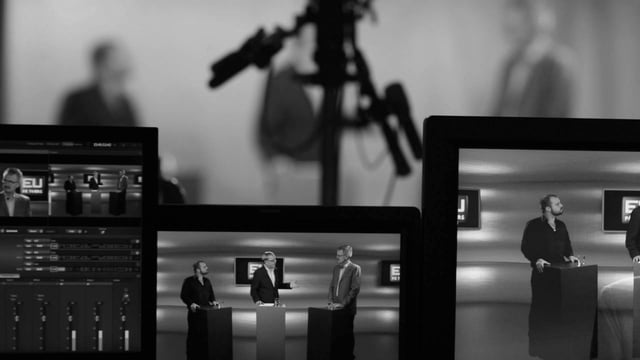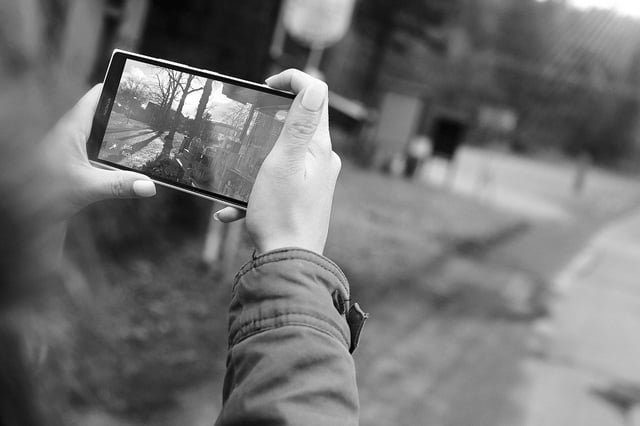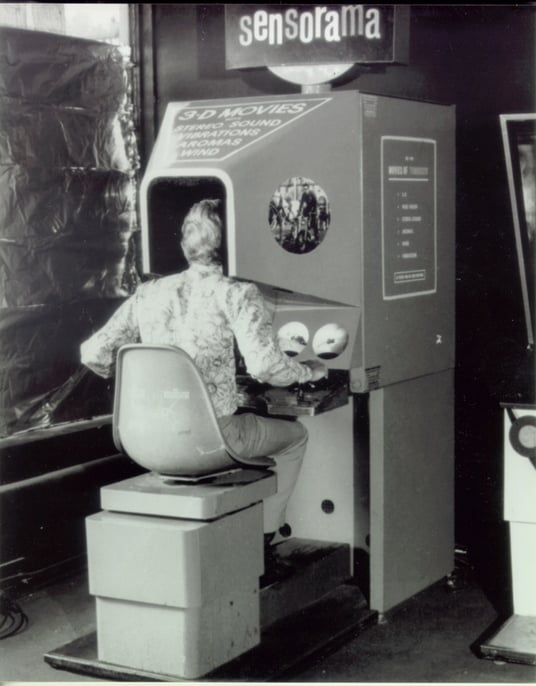


Six trends in digital marketing for art galleries




When it comes to marketing for art galleries, there's a lot to consider. Most will have a strong brand image to uphold, complex working relationships with artists to maintain, and a bunch of fast-moving competitors to keep up with. Aesthetics are everything and leads need to be dazzled at the same time they're nurtured and informed.
Before you read on we have a question? Are you confident that your sales and marketing strategy is working?
If theres any doubt in your mind then use our free yet powerful comparison tool and get a full audit of your sales and marketing performance.
What's makes it more difficult? More features than ever are constantly being released into the digital world. Instagram Stories are exploding in popularity, bots have taken Facebook messenger by storm and video content is leading the pack in terms of engagement.
Luckily, we have quite a bit of experience in this department, so we wanted to share some top trends that can help to revolutionise your marketing for art galleries, exhibitions and even museums. Jump on board, or risk becoming irrelevant!
1. Live video
Live video is everywhere. I feel like I get a notification every day from a friend, brand or influencer going live on Facebook or Instagram, and it's easy to see the appeal. Live content can help you stand out from the crowd when plenty of brands are still relying on social scheduling. Instant live video notifications actively encourage all your followers to view your content as it's being created, and gives them the perfect opportunity to engage with you by leaving live comments, interacting with your content wherever they are in the world.

So how does this impact marketing for art galleries? Crucially, it can give amazing insight into your brand, making your social content look a lot more authentic and presenting your gallery as an inviting space. Remember, plenty of people still feel intimidated in the art market, so it's your job to welcome them in and show them around - whether in person or online.
So here are some ideas for using live video as part of social media marketing for art galleries. You could have it running during the launch night of a new exhibition, or display a new piece that comes into the gallery if you want to shout about it. Alternatively, if you have some particularly well-known artists at the gallery, sponsor the post and host an artist Q & A session where followers can ask questions in the videos comment section.
2. Interactive content
Interactive content is a great medium when it comes to marketing for art galleries. By giving someone an opportunity to interact with your content, rather than just scanning over it, you can encourage engagement and maybe even interaction with your gallery.

For instance, you could produce an interactive post on which artist's work most suits an individual's personal tastes, or their current interior design. The questions whittle down the options, and when the result is revealed, individuals can click through to a landing page showing available works by their favoured artist.
If you're looking for a quicker and simpler way of engaging with your audience though, Twitter and Instagram polls are probably the easiest form of interactive content to set up. This could play a very effective role for customer research, as you could quiz your followers on what works, artists and events they like best. Alternatively, you could give them ownership by allowing them to vote on theme of your next exhibition, or their favourite piece to feature in an upcoming window display.
3. Influencer marketing
In an online world of ad blockers and banner blindness, it can be tough to reach out to new audiences. So how can you improve lead generation through digital marketing for art galleries? Don't worry, you can still speak to the right people thanks to influencer marketing.

We're not talking about paying millions to Hollywood celebrities to share a selfie with one of your products (you can literally smell that a mile away) - instead we're talking about building real relationships with social media influencers who share some things in common with your gallery. Perhaps they're avid art lovers, all round culture vultures, or passionate promoters of your local area. We've even seen natural partnerships blossom between art galleries, interior designers and furniture manufacturers - all of whom are invested in making homes beautiful. Either way, your influencers need a genuine interest in what you have to offer.
So how do you choose the right person? First, pick quality over quantity. Look for interactions rather than total followers, as people can manipulate the latter statistic. Especially in light of Instagram's ever changing algorithms, a post's engagement is everything.
Secondly, it's important that these influencers write the posts themselves and use photos they have taken. Naturally, you can give them suggestions and direction, but avoid copy and paste jobs as they only come across as inauthentic. Going back to sometimes smelling a rat with influencer marketing, you want a sponsored post to blend in naturally with that person's wall of posts.
4. Mobile video
So much of our newsfeeds are full to the brim with video marketing at the moment. With our attention spans getting shorter and shorter, video is a super important bandwagon that everyone needs to jump on. According to Tech Crunch, 100 million hours of video per day are watched on Facebook. Yes, that's a lot.

We've got another statistic for you. According to our pals over at HubSpot, 85% of videos on Facebook are watched without sound. What does that tell you? Well, you need to bear in mind that when you create videos, you need them to make sense without sound - or at least attract enough attention to convince viewers to put their headphones in.
If you're confused about mobile video marketing for art galleries, just take a moment to consider why the art industry is so fascinating. Give the viewer a glimpse into this world. You could share artist interviews, film an exhibition launch, record a day in the life of your gallery curator - the ideas are endless. Just remember to add in subtitles if necessary.
5. Virtual reality
Virtual reality has truly taken off. Well, it's been around for years, but technological advances now mean that most people who own a smartphone can actually get stuck into it. While this is still an emerging trend, it could definitely play a part in digital marketing for art galleries in the future. There's so much content just lying around, waiting for you to get involved.

A recent New York gallery exhibition added a virtual reality element that had been painted by the exhibiting artist. Pretty cool right? We certainly think so.
Not ready to delve into the world of virtual reality yet? Perhaps add a 360 tour function to your website. It may help people frame your art in a less abstract setting, thus convincing them to buy it for their walls. It will also make people excited about an upcoming visit, or may even convince them to book a private viewing.
6. Personalisation
In a world where everything is becoming increasingly digital, it's getting harder and harder for your content to be seen. Especially when the person receiving your content sees thousands of different messages every day.
Luckily, there's a way to add a special touch to your marketing these days. Personalisation goes a long way in a world where things are becoming increasingly impersonal. This can be as simple as using marketing automation tools to add someone's first name to an email subject if you're sending out a mass newsletter.
Getting a little more in depth, you could monitor who has opened specific emails or clicked on certain aspects of your email, and tailor the content you send to them accordingly. For instance, Artsy sends me regular newsletters which highlight new works by artists who I've previously research on their site. Artsy knows that I've previously shown interest in these artists, so it's a good bet I'll want to see more similar content in the future.
7. Try out live chat
If you read our blog on the regular, you'll know we're big fans of conversational marketing. More than ever, prospective leads are choosing to communicate with brands in the same way they stay in touch with friends, through instant messaging apps. Whether you're catching up on a Whatsapp group chat or sliding into someone's DMs on Instagram, chances are you already utilise this form of communication for personal reasons - so why not adopt it for professional purposes too?
Six & Flow worked with an art gallery to implement Drift on their website, creating a direct line between site visitors and the client's sales team. We'd like to point out here that the sales team weren't particularly onboard with this new tool from the outset - they had plenty to do already, and this new tool just sounded like more work. However, within a few weeks the sales started rolling in, and soon salespeople were fighting to claim Drift leads who often came with good engagement, high buying intent and an interest in speedy service.
Within just six months, our client saw a 13% increase in lead volume and a 45% improved conversion rate, resulting in a 16% increase in sales overall. Take a look at our case study to find out more.







